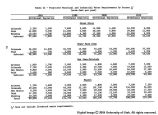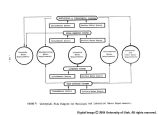| OCR Text |
Show PART II PRESENT STATUS Domestic water uses can generally be categorized as exterior or interior. Exterior uses include lawn and plant watering, swimming pools, and car washing. Interior uses include laundering, dishwashing, garbage disposal operations, cooking and food preparation, and air conditioning (when water cooled) as well as personal uses such as toilet flushing, bathing and drinking. Domestic uses of water have been increasing as technology makes an increasing number of water-using appliances available and economically attractive. Most interior domestic uses of water do not have high depletions. Water used for lawns, plants, and automobile washing is virtually all depleted which accounts for the large domestic per capita depletion. Domestic water requirements exhibit definite seasonal variations. Withdrawal requirements vary from a maximum during the summer months of about 160 percent of the average monthly withdrawal requirement to a minimum during the winter months of about 60 percent of the average month- ly withdrawal requirement. Peak demands occur primarily during the months of June, July, and August. Manufacturing Water Use Manufacturing activity within the Region is not intense and has been largely confined to sectors related to agriculture, mining, forestry, and tourism. Withdrawal requirements for the manufacturing water-use category were 11,500 acre-feet in 1965; depletions were 1,900 acre-feet, or 16 per- cent of the withdrawals. The Upper Main Stem Subregion had the largest subregional manufacturing water requirements. Manufacturing water requirements vary significantly between different industries. There are also significant variances among manufacturing plants within a particular industry. Among the many factors which affect manufacturing water requirements are withdrawal water cost; operating rate of production; technological change; quality of raw product inputs; waste effluent controls; size, age and location of the plant; and water manage- ment practices (recirculation). Indications are that manufacturing water requirements are particularly responsive to various economic factors. As the cost of water to manufacturing industries increases either through increased water supply costs or increased waste disposal costs, water management practices, such as recirculation, will be used to decrease withdrawal water requirements (4) (6). Manufacturing industries require water for a variety .of uses includ- ing cooling, steam generation, process, sanitary and other water uses. Water for cooling and steam generation is required in most manufacturing industries. Cooling water is used to absorb and carry away waste heat. Cooling water which is distributed in once-through cooling systems is 10 |

















































































